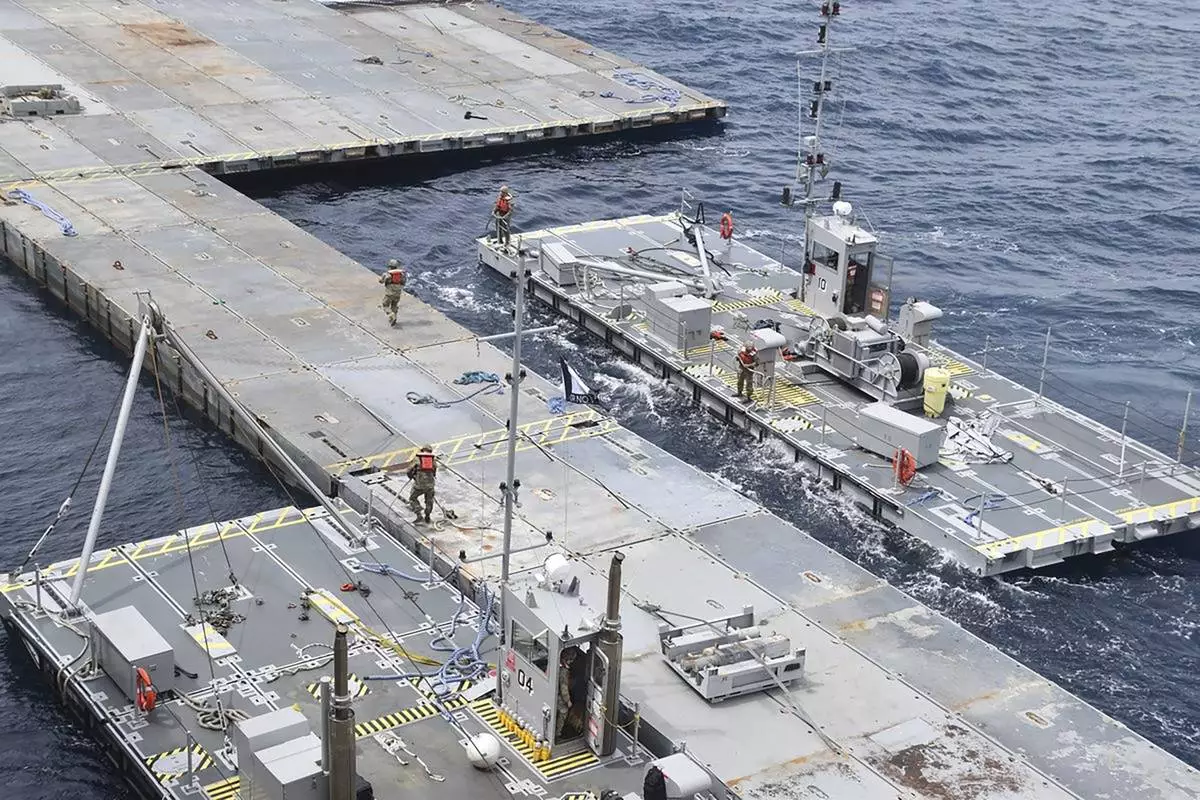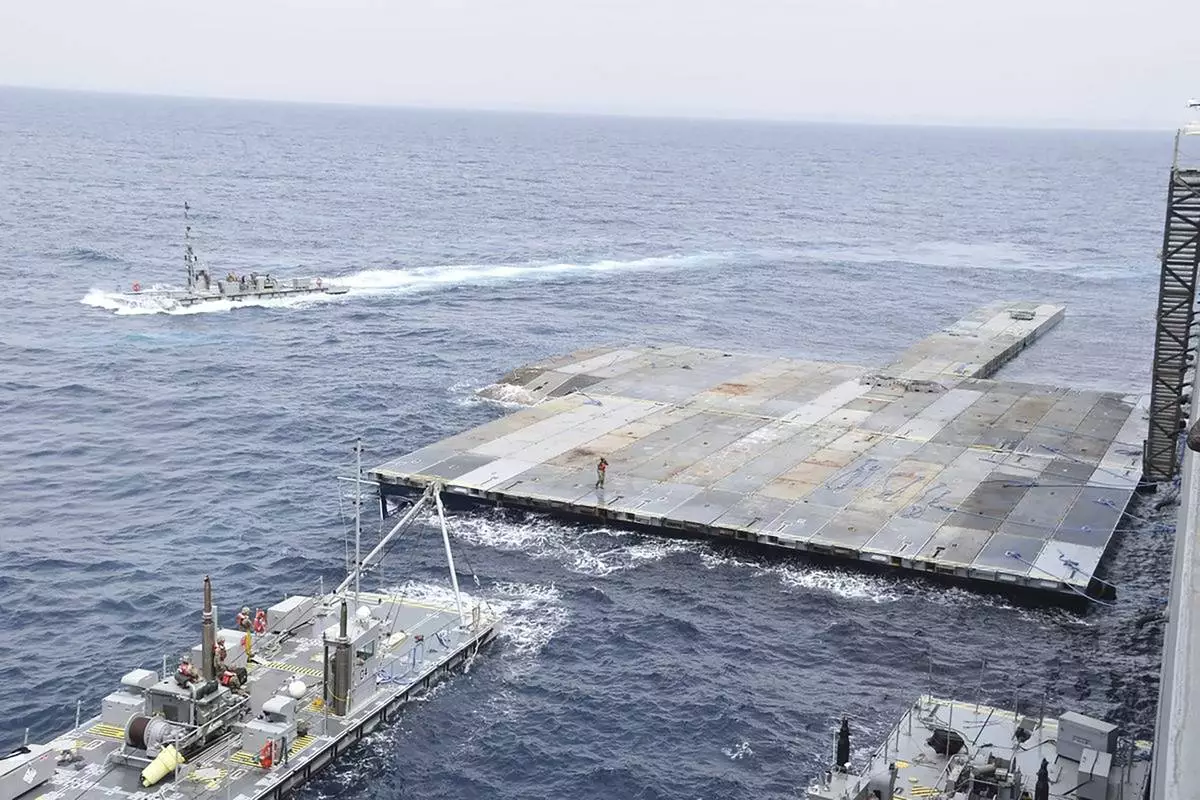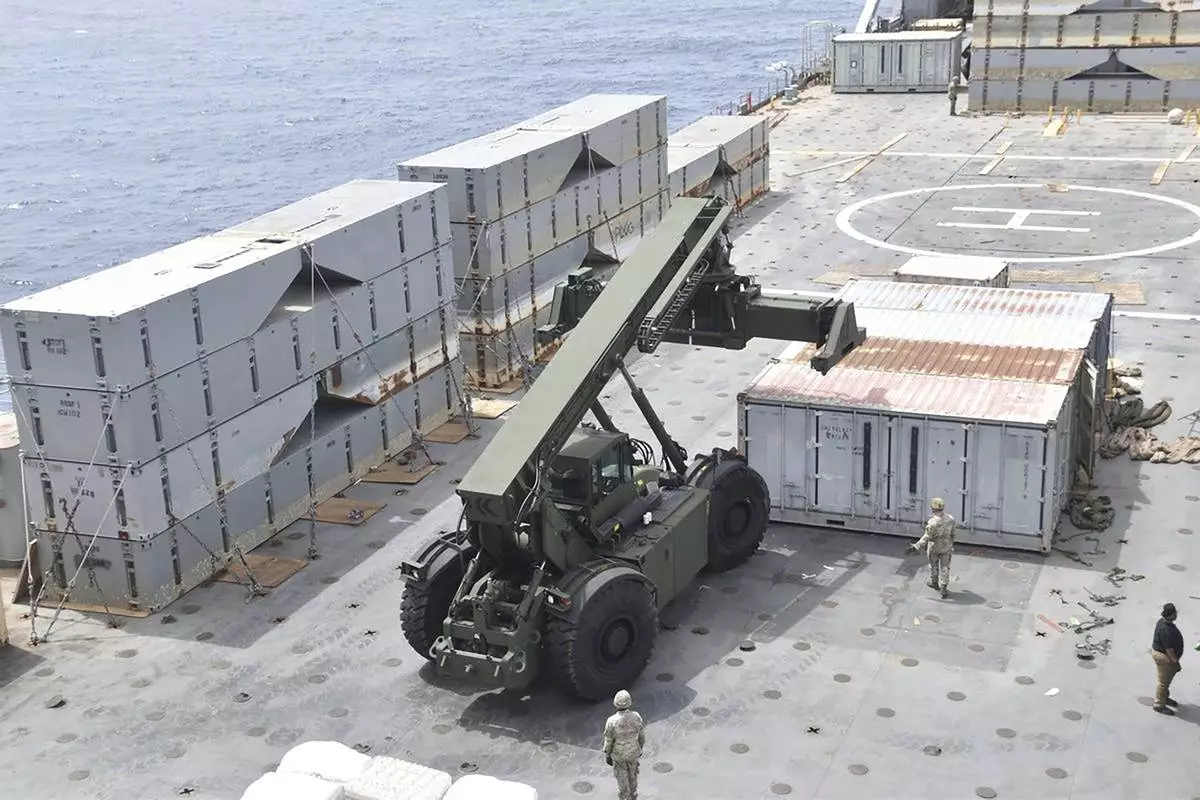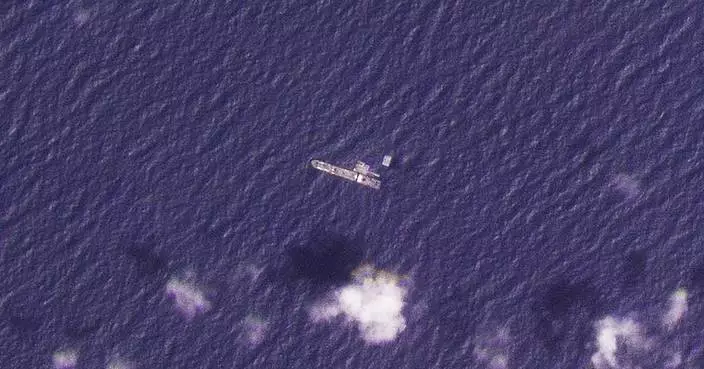Heather and Clark Ensminger breathed sighs of relief when their Los Angeles-bound plane took off from Florida on time: Their biggest hurdle was now eliminated for achieving their goal of visiting six Disney parks on two coasts in one day.
They succeeded Wednesday, visiting four Disney parks in the Orlando, Florida, area and two in Anaheim, California, with a 2,500-mile cross-country flight and two time zones in between, all within 20 hours.
"It was incredible, unbelievable, surreal," Heather Ensminger, 30, said in a phone interview early Thursday as the Kingsport, Tennessee, couple prepared to return to the California Disney parks for a second day.
Adding to the surreal feeling, they said, was the media interest in their Disney pilgrimage after an Associated Press story about their plans was published. As they traveled from park to park, they were bombarded with calls and texts from radio stations, TV outlets and newspapers, wanting to know where they were on the journey.
A camera crew from Disney World's publicity office tracked them down for an interview, and they were stopped by Disney guests who recognized them from media reports.
They also updated friends and fans of the Disney parks throughout the day, with posts on a Facebook page for Heather Ensminger's travel-agent business.
The trip was planned for their 10th wedding anniversary, but it also marked a sadder occasion: the first anniversary since Heather Ensminger's father had died. Last year, a few days before the Ensmingers planned to visit Walt Disney World in Florida for a vacation with her parents, Heather's father had a fatal heart attack.
"A couple months ago, I was having a hard time with the anniversary of my dad's death and my husband began planning the trip without letting me know," Heather Ensminger said.
She ultimately was tipped off by her credit card company after Clark used points to pay for part of the trip.
After an evening flight to Orlando, the couple arrived at Disney's Hollywood Studios on Wednesday at 6:15 a.m., Eastern Daylight Time, and were the first people let into the park when it opened for breakfast at 7 a.m.
About two hours later, they went to Epcot, and by 10:30 a.m. they were at the Magic Kingdom where they drank apple cider at Gaston's Tavern. Following lunch at Animal Kingdom, they made it to Orlando International Airport by midafternoon.
The flight was the worst part. To save money, they both sat in middle seats, five rows apart. Clark, who's about the size of an NBA player, endured a tight squeeze as his knees hit the seat in front.
The plane touched down at Los Angeles International Airport about 6:45 p.m., Pacific Daylight Time, and, after navigating rush hour traffic, they were at Disney California Adventure Park more than an hour later.
Before leaving Disneyland at 11:30 p.m., Pacific Daylight Time, they sat down on a bench on Main Street and just soaked it all in.
"We took five minutes to just look at each other and say, 'Wow we did it! What a great day," Heather Ensminger said.
Follow Mike Schneider on Twitter at https://twitter.com/MikeSchneiderAP
WASHINGTON (AP) — The U.S. and allies are scrambling to pull together a complex system that will move tons of humanitarian aid into Gaza by sea. Nearly two months after President Joe Biden gave the order, U.S. Army and Navy troops are assembling a large floating platform several miles off the Gaza coast that will be the launching pad for deliveries.
But any eventual aid distribution — which could start as soon as early May — will rely on a complicated logistical and security plan with many moving parts and details that are not yet finalized.
The relief is desperately needed, with the U.N. saying people in Gaza are on the brink of famine. But there are still widespread security concerns. And some aid groups say that with so much more needed, the focus should instead be on pushing Israel to ease obstacles to the delivery of aid on land routes.
Setting up the system is expected to cost at least $320 million, the Pentagon said Monday. Here's how it will work:
Humanitarian aid bound for Gaza through the maritime route will be delivered by air or sea to Cyprus, an island at the eastern edge of the Mediterranean Sea.
Cyprus Foreign Minister Constantinos Kombos has said the aid will undergo security checks at Larnaca port. Using that one departure point will address Israel's security concerns that all cargo be inspected to ensure that nothing is loaded on ships that Hamas could use against Israeli troops.
The screening will be strict and comprehensive, including the use of mobile X-ray machines, according to a Cyprus government official who spoke on condition of anonymity to publicly disclose details about the security operation. The process will involve Cypriot customs, Israeli teams, the U.S. and the United Nations Office for Project Services.
An American military official said the U.S. has set up a coordination cell in Cyprus to work with the government there, the U.S. Agency for International Development and other agencies and partners. The group will focus on coordinating the collection and inspection of the aid, said the official, who also spoke on condition of anonymity to discuss operation details.
Once the pallets of aid are inspected, they will be loaded onto ships — mainly commercial vessels — and taken about 200 miles to the large floating pier being built by the U.S. military off the Gaza coast.
There, the pallets will be transferred onto trucks that in turn will be loaded onto two types of smaller Army boats — Logistic Support Vessels, or LSVs, and Landing Craft Utility boats, LCUs. The U.S. military official said the LSVs can hold 15 trucks each and the LCUs about five.
The Army boats will then shuttle the trucks from the pier to a floating causeway, which will be several miles away and anchored into the beach by Israeli Defense Forces.
Since Biden has made clear that no U.S. forces will step foot in Gaza, the troops doing the construction and driving and crewing the boats will be housed and fed on other ships offshore near the large floating pier.
The British Royal Navy support ship RFA Cardigan Bay will provide accommodations for hundreds of U.S. sailors and soldiers working to establish the pier. Another contracted ship will also be used for housing, but officials did not identify it.
The small Army boats will sail to the two-lane, 550-meter (1,800-foot) causeway.
The U.S. military official said an American Army engineering unit has teamed up with an Israeli engineering unit in recent weeks to practice the installation of the causeway, training on an Israeli beach just up the coast. The U.K. Hydrographic Office also has worked with the U.S. and the Israeli military to analyze the shoreline and prepare for the final installation.
U.S. vessels will push the floating causeway into place, shoving it into the shoreline, where the Israeli Defense Forces will be ready to secure it.
Trucks loaded with the pallets of aid will drive off the Army boats onto the causeway and down to a secure area on land where they will drop off the aid and immediately turn around and return to the boats. The trucks will repeat that loop over and over, and they will be confined to that limited route to maintain security.
They will be driven by personnel from another country, but U.S. officials have declined to say which one.
Aid groups will collect the supplies for distribution on shore, at a port facility built by the Israelis just southwest of Gaza City. Officials say they expect about 90 truckloads of aid a day initially and that it will quickly grow to about 150 a day.
The U.N. is working with USAID to set up the logistics hub on the beach.
There will be three zones at the port: one controlled by the Israelis where aid from the pier will be dropped off, another where the aid will be transferred and a third where Palestinian drivers contracted by the U.N. will wait to pick up the aid before taking it to distribution points.
Aid agencies, however, say this maritime corridor isn't enough to meet the needs in Gaza and must be just one part of a broader Israeli effort to improve sustainable, land-based deliveries of aid to avert famine.
The groups, the U.N., the U.S. and other governments have pointed to Israel's aid restrictions and its failure to safeguard humanitarian workers as reasons for the reduction in food shipments through land crossings, although they credit Israel with making some improvements recently.
U.S. Gaza envoy David Satterfield said last week that only about 200 trucks a day were getting into Gaza, far short of the 500 that international aid organizations say are needed.
A key concern is security — both from militants and the Israeli military, which has been criticized for its killing of aid workers.
Sonali Korde, a USAID official, said key agreements for security and handling the aid deliveries are still being negotiated. Those include how Israeli forces will operate in Gaza to ensure that aid workers are not harmed.
Aid groups have been shaken by the Israeli airstrike that killed seven World Central Kitchen aid workers on April 1 as they traveled in clearly marked vehicles on a delivery mission authorized by Israel.
And there has already been one mortar attack at the site by militants, reflecting the ongoing threats from Hamas, which has said it would reject the presence of any non-Palestinians in Gaza.
U.S. and Israeli officials have declined to provide specifics on the security. But the U.S. military official said it will be far more robust when deliveries begin than it is now. And there will be daily assessments of the force protection needs there.
The IDF will handle security on the shore, and the U.S. military will provide its own security for the Army and Navy forces offshore.
Associated Press reporters Menelaos Hadjicostis in Nicosia, Cyprus, and Ellen Knickmeyer in Washington contributed.

This undated photo released early Tuesday, April 30, 2024, by the U.S. military's Central Command shows construction off a floating pier in the Mediterranean Sea off the Gaza Strip. A U.S. Navy ship involved in the American-led effort to bring more aid into the besieged Gaza Strip is off shore from the enclave, slowly building out a floating platform for the operation, satellite photos analyzed Monday, April 29, 2024, by The Associated Press show. (U.S. military's Central Command via AP)

This undated photo released early Tuesday, April 30, 2024, by the U.S. military's Central Command shows construction off a floating pier in the Mediterranean Sea off the Gaza Strip. A U.S. Navy ship involved in the American-led effort to bring more aid into the besieged Gaza Strip is off shore from the enclave, slowly building out a floating platform for the operation, satellite photos analyzed Monday, April 29, 2024, by The Associated Press show. (U.S. military's Central Command via AP)

This undated photo released early Tuesday, April 30, 2024, by the U.S. military's Central Command shows construction off a floating pier in the Mediterranean Sea off the Gaza Strip. A U.S. Navy ship involved in the American-led effort to bring more aid into the besieged Gaza Strip is off shore from the enclave, slowly building out a floating platform for the operation, satellite photos analyzed Monday, April 29, 2024, by The Associated Press show. (U.S. military's Central Command via AP)

This undated photo released early Tuesday, April 30, 2024, by the U.S. military's Central Command shows construction off a floating pier in the Mediterranean Sea off the Gaza Strip. A U.S. Navy ship involved in the American-led effort to bring more aid into the besieged Gaza Strip is off shore from the enclave, slowly building out a floating platform for the operation, satellite photos analyzed Monday, April 29, 2024, by The Associated Press show. (U.S. military's Central Command via AP)













